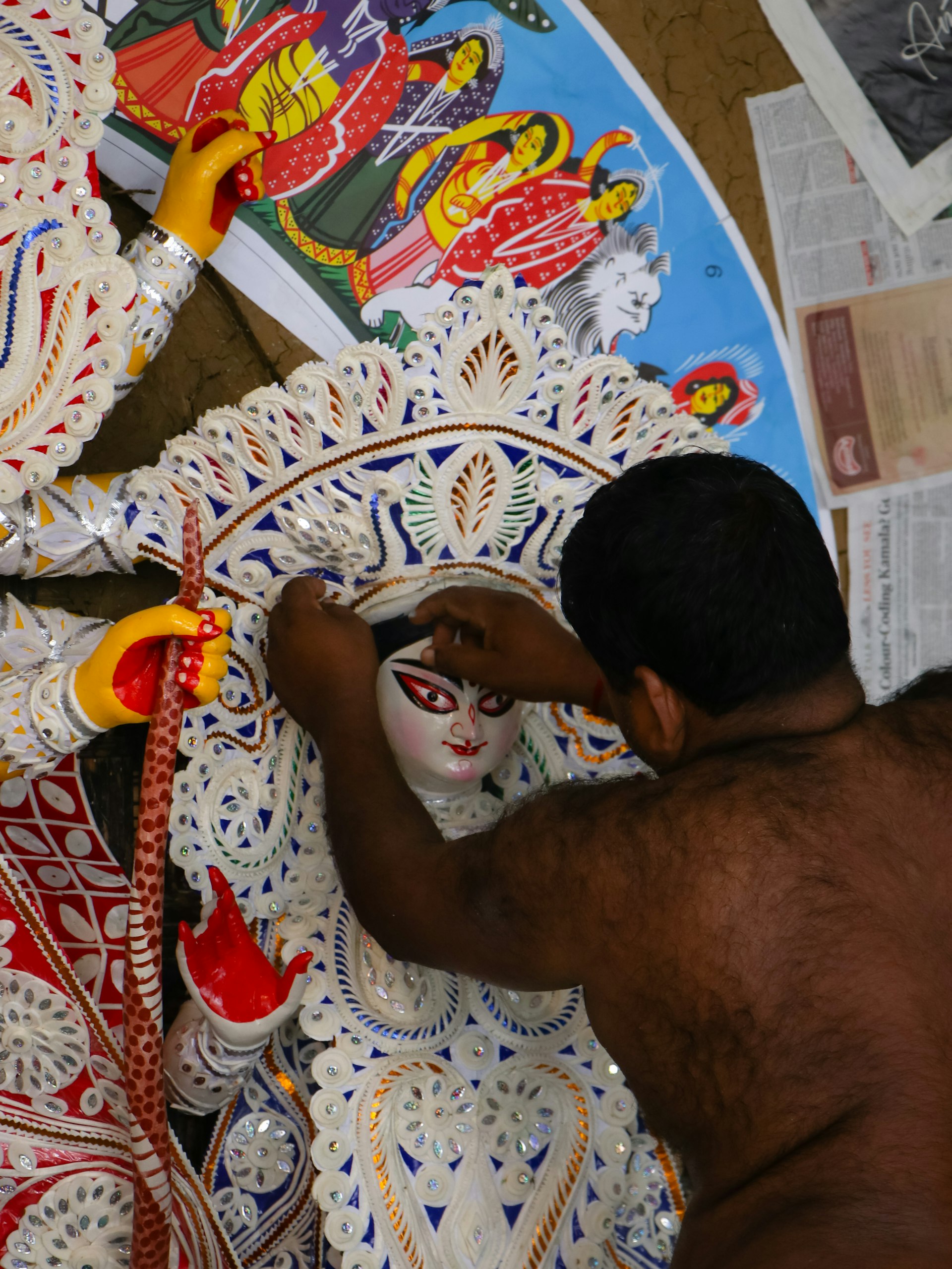Transform Your Well-Being: How DIY Crafts Fuel Creativity and Relieve Stress

Photo by Rohit Sharma on Unsplash
Introduction: The Power of DIY Crafts for Mind and Mood
In today’s rapid-paced world, finding simple and effective outlets for both creativity and stress relief is vital for mental well-being. DIY crafts offer a unique opportunity to channel stress into productive, enjoyable projects while unlocking creative potential. Research demonstrates that hands-on crafting can reduce anxiety, elevate mood, and foster a sense of accomplishment, making it an accessible form of self-care and mindfulness in everyday life [2] .
Why DIY Crafts Boost Creativity and Emotional Wellness
Crafting stimulates the brain by engaging problem-solving skills, encouraging new perspectives, and initiating the release of dopamine-the neurotransmitter responsible for feelings of reward and satisfaction [2] . The sense of pride from completing a project can fuel ongoing motivation and help individuals process emotions in a safe, constructive manner.
Studies reveal that creative activities such as scrapbooking, painting, knitting, and building not only reduce stress but also improve cognitive function and overall emotional health. For example, trauma recovery programs have successfully incorporated crafting as a therapeutic tool, offering participants a safe space to express and work through complex feelings [2] .
Crafting as a Meditative Practice for Stress Relief
DIY crafts foster mindfulness by requiring focus on the present task, which helps quiet anxious thoughts. Repetitive actions-such as painting strokes, knitting loops, or intricate coloring-mimic meditative practices and can profoundly reduce stress levels [3] . Many crafters report that immersing themselves in a project provides a much-needed mental break from daily worries and pressures [4] .
For example, college students under intense academic stress have found that even brief crafting sessions provide relief, improve concentration, and renew motivation. The accessibility of crafting-requiring minimal supplies and time-makes it an ideal coping strategy for busy schedules [4] .
Getting Started: Actionable Steps for Integrating DIY Crafts Into Your Lifestyle
Embarking on a DIY craft journey is straightforward and requires no prior expertise. Start by identifying an activity that appeals to you-whether that’s painting, knitting, candle making, or paper crafts. Here’s how you can begin:
- Choose Your Craft: Consider your interests, available time, and resources. Many crafts, such as coloring or simple knitting, require minimal investment and can be learned quickly [5] .
- Gather Materials: Most local craft stores offer beginner kits. Alternatively, household materials like paper, old jars, and yarn can be repurposed for creative projects. Reusing materials can add an extra layer of satisfaction and sustainability to your crafting experience.
- Set Aside Time: Dedicate a regular window-whether 10 minutes or an hour-to your craft. Consistency is key to reaping the mental health benefits.
- Focus on the Process, Not Perfection: Allow yourself to experiment and make mistakes. The act of creating is more important than the final product.
- Reflect and Share: Take a moment to appreciate your completed work. Sharing your creations with friends, family, or online communities can boost self-esteem and foster social connections [2] .
Popular DIY Crafts for Creativity and Stress Relief
There’s a wide range of crafts suitable for all skill levels and preferences. Here are some proven activities with well-documented benefits:
- Coloring: Adult coloring books and printable coloring pages offer a therapeutic outlet for stress. The intricate patterns encourage focus and relaxation, making them ideal for quick mental resets [5] .
- Knitting and Crochet: Both crafts involve repetitive motions that are calming and meditative. Beginners can start with simple scarves or squares and gradually progress to more complex projects [5] .
- Painting: Watercolors, acrylics, or even finger painting can serve as expressive outlets and are excellent for experimenting with color and form. Painting is especially beneficial for those seeking self-expression and emotional release.
- Candle Making: Blending fragrances and pouring wax engages both creativity and sensory experience. Candle making is accessible through affordable kits and online tutorials [3] .
- Paper Crafts: Activities like origami, card making, or scrapbooking are cost-effective and encourage fine motor skills and artistic design.
If you’re uncertain where to begin, many craft supply retailers and local libraries offer beginner workshops and starter kits. Search for “DIY craft classes near me” or inquire with community centers for upcoming sessions.
Overcoming Common Challenges and Alternative Approaches
Some individuals may feel intimidated by the perceived skill or time required for crafting. The key is to start small: even modest projects bring measurable benefits. If you find it difficult to begin, consider joining an online crafting group or following along with video tutorials. There are active communities on platforms such as YouTube and Pinterest that provide free, step-by-step guidance. If in-person socialization is preferred, local community centers and libraries may host group crafting sessions.
For those with limited mobility or dexterity, digital crafts-such as graphic design or virtual scrapbooking-can offer similar cognitive and emotional advantages. The important thing is to engage in an activity that feels enjoyable and achievable for you.
Building a Sustainable DIY Craft Habit
Integrating crafting into your routine requires intention and flexibility. Here are strategies to help you maintain a sustainable practice:

Photo by Jasmin Schreiber on Unsplash
- Start with achievable goals: Commit to a short daily or weekly session. Even 10 minutes of mindful crafting can yield benefits.
- Create a dedicated space: Organizing your supplies in a specific area makes it easier to begin projects and stay motivated.
- Invite others to join: Crafting with friends or family can enhance motivation and foster social bonds. Group projects can be especially rewarding.
- Track your progress: Keeping a journal or photo log of your finished pieces can reinforce your commitment and highlight your growth over time.
Accessing Resources and Support
While many craft supplies are available at local stores, you can also explore online options for kits and instructional materials. To find reputable sources, consider searching for “beginner DIY craft kits” or “mindful crafting workshops” through established retailers or local community centers. Public libraries often provide free access to crafting books, magazines, and sometimes even tools. For personalized guidance, you may consult with occupational therapists or mental health professionals who integrate creative activities into their practice.
If you are seeking support groups or therapeutic programs that utilize crafting for stress relief, you can contact local mental health organizations or inquire with your healthcare provider about creative arts therapy programs in your area.
Key Takeaways: Transform Your Wellness with DIY Crafts
DIY crafts offer a proven, accessible, and enjoyable path to greater creativity and stress relief . By embracing hands-on activities, you can nurture your emotional well-being, unlock new skills, and build a sustainable practice of self-care. Whether you’re coloring, knitting, painting, or exploring new crafts, the benefits extend far beyond the final product-supporting a happier, healthier, and more mindful lifestyle.
References
- [1] Diversitech Global (2023). The Benefits of DIY Craft Kits for Mental Well-being.
- [2] Altenew (2025). The Science of Crafting: How Creativity Enhances Your Well-Being.
- [3] Northwood Candle Supply (2024). Craft Your Way to a Happier Mind: The Surprising Benefits of DIY Fun!
- [4] Whipperberry (2025). Why DIY Crafts Are a Great Stress Reliever for College Learners.
- [5] Sadie Seasongoods (2023). Mindful Craft Ideas for Relaxation.



